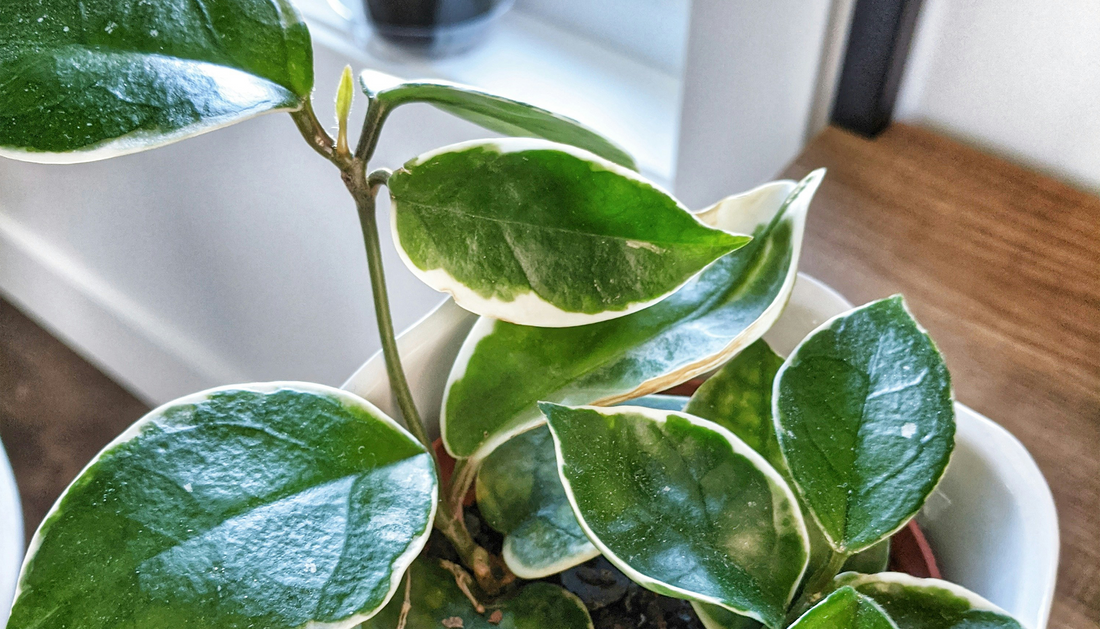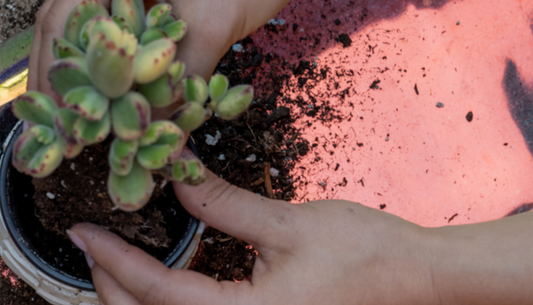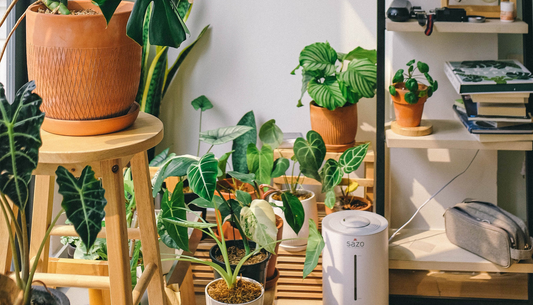Hoyas are having a moment in the sunlight with their lush foliage and easy-to-care for nature. They’re the perfect plants for those who might forget to water or accidentally neglect their plants from time to time.
Hoyas are very forgiving and can maintain their tropical charm with minimal love. If you’re looking for a low maintenance beauty, the Hoya might be your answer. Here’s a complete guide to keeping Hoyas thriving year-round.
Watering:
Hoyas like their soil to dry out completely between waterings. Overwatering is their biggest enemy, so when in doubt, err on the side of dryness. If you notice leaves that feel mushy or yellow, your plant is likely overwatered. If you’re not sure when to water, stick your finger a few inches into the soil. If it’s dry on the top couple of inches, it’s time to water. If you feel any dampness, hold off on watering.
When it’s time to water, give your Hoya a thorough soak. Run water all the way through the soil until it runs out the drainage holes.
Sunlight:
Hoyas like bright, indirect sunlight. They can tolerate some direct morning light, but avoid direct afternoon sun, as this harsher light can scorch their leaves.
Ideally, put your Hoya in an east or west facing window for optimal light levels and rotate it periodically for even growth.
Temperature:
Hoyas like warm and cozy temps, ranging between 65°F and 85°F. They don’t like the cold and want to steer clear of temps below 50°F.
Like most plants, they do best when protected from extremes. Keep them away from heat sources, such as vents, radiators, or drafty areas where they might be exposed to big temperature swings.
Humidity:
Hoyas are tropical plants, so they love humidity. They do best in moderate to high humidity environments. To boost humidity levels, group them with other plants and use a humidifier or pebble tray.
If you opt to mist their leaves, avoid doing so in direct sunlight, as water droplets can act like little magnifying glasses and burn their leaves.
Animal Safe:
Luckily, Hoyas are non-toxic to both pets and humans! These tropical plants love to climb and trail, making them a safe option to drape from shelves within reach of four-legged friends.
Fertilization:
Hoyas are light eaters and prefer a balanced diet, such as a 9-9-9 or 4-4-4 NPK. During growing season (spring and summer), they only need a half strength food, and they generally do not need to be fertilized during the winter season.
If you are feeding with PlantKiss food spikes, err on the lower end of the recommended spike-to-pot ratio. The slow release nature of PlantKiss spikes allow the nutrients to evenly absorb, which Hoyas appreciate, as they can be susceptible to over-fertilization.
Pruning:
Hoyas don’t require much with pruning. You can simply remove dead leaves or prune to control growth. Avoid harsh pruning, as it can reduce your Hoyas’ blooms.
Conclusion:
Overall, Hoyas are easy going plants that thrive with a hands-off approach. The most important things to remember are to:
- Let them dry out between waterings
- Give them bright, indirect sunlight
- Feed lightly




